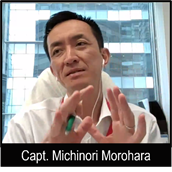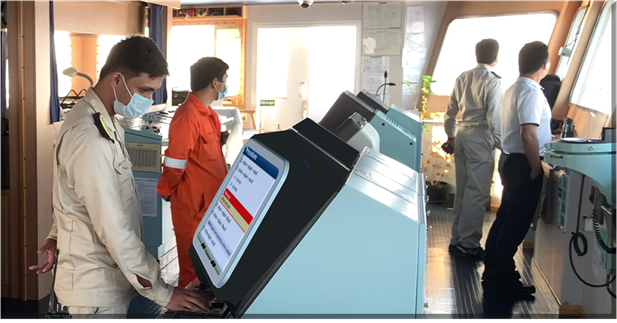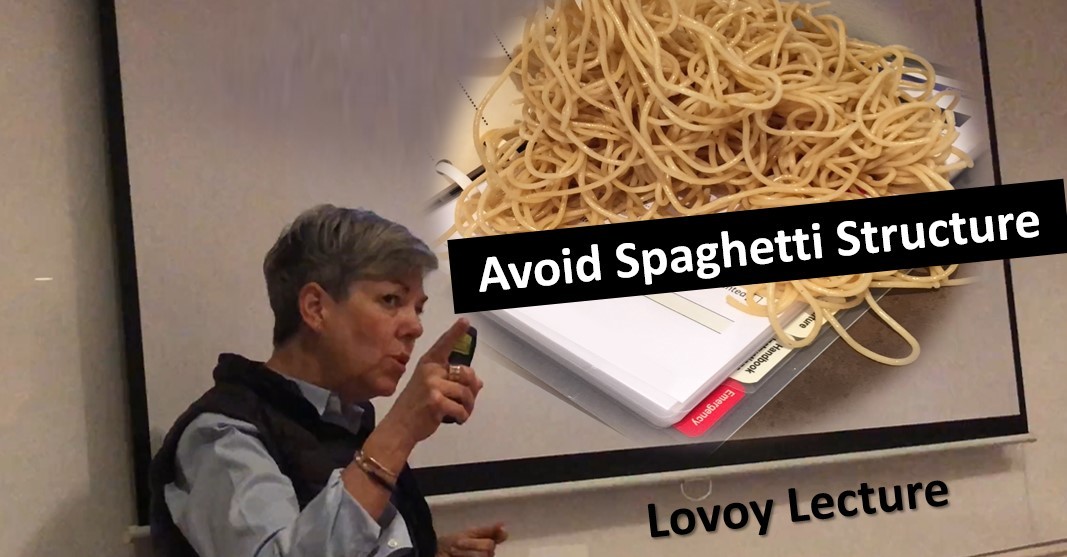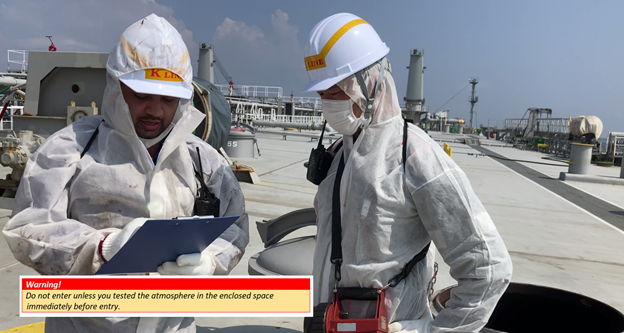K-Line Implements Lovoy Method
“With our new Safety Management Systems (SMS), we can focus more in on necessary items and make more serious risk assessments. It is an approach that our seafarers are happy to see and have”.

The K-Line Group operates more than 420 ships. Capt. Michinori Morohara, is the DPA and Group Leader of K Marine Ship Management Pte. Ltd. which manages K-Line’s oil and gas tankers. In this article he shares K-Line’s experience after implementing the Lovoy Method into their tanker fleet.
We Want a SMS Written by Our Seafarers for Our Seafarers

Capt. Morohara explains that three years ago, K-Line decided to simplify and improve their SMS. We wanted a SMS written by our seafarers for our seafarers. We wanted to use internal resources. We did not want a SMS written by external consultants. At the same time, we wanted to base our new SMS on the latest science and research.
We Needed a Method for Lasting Change
In K-Line, quality is not a quick fix – it is about creating lasting change. It is about stopping our writers from adding more complicated text. It was therefore crucial for us to find someone who had a detailed methodology that they could transfer to us. We did not want someone who only could write for us without the ability to give training, share detailed rules, and leave the knowledge behind. In 2020 we started looking for a research and development company which could train our staff and help our own people to rewrite and restructure our SMS.
Controlled Language
We selected the Lovoy Method because it includes what scientists call a controlled language. It is English but with strict rules for grammar, vocabulary, layout, and structure. When used correctly, it reduces complicated text without losing facts. It makes it easier for both native and non-native English speakers to write user-friendly procedures. It allowed us to use our own writers. It helped our writers completely restructure our SMS and move into electronic checklists in a user-friendly way.
Lovoy Training and Support Program
Lovoy offered a comprehensive training and support program that transferred the knowledge and skills to our staff. The support included lectures, videos, mail-in exercises and CBT. After the initial training we used Lovoy to guide our writers. Lovoy made examples and suggested how to restructure each procedure and the overall big picture SMS structure. It helps us comply better with our many vetting standards. Our internal staff with seafaring background did the writing.

Electronic Checklists
The Lovoy Method included templates with a layout based on more than 10 years of research and testing in shipping. The method is media independent; we can use it for both paper and digital publication. We integrated the Lovoy Method and layout in our new ship management software with electronic checklists and permit to work system.
Feedback from Our Seafarers
Capt. Morohara explains that the seafarers clearly appreciate the new SMS. He shares this feedback:
- It is so clear
- Easy to read
- Easy to understand
- Happy to see and happy to have the new SMS
- The old system was much more time consuming to use
Untangling Spaghetti Structure is the Hardest Part
Terje Lovoy, senior partner at Lovoy, describes how successful SMS simplification requires a lot more than just washing out complicated words and long sentences. Lovoy estimates that text washing counts for about 20% of SMS simplification success. Overly complicated text is certainly a problem which SMS writers must address. But the biggest problem is what Lovoy call spaghetti structure.
"How well SMS writers succeed with restructuring is the single most important SMS simplification success factor. Untangling the spaghetti structure is the hardest part. Unfortunately, many writers skip this crucial step."
K-Line did an excellent job both with text washing and untangling the spaghetti.

More Risk-based Checklists
Capt. Morohara also shares how they used Lovoy’s risk-based checklist concept. We have step procedures closely linked to each risk-based checklist. Our procedure writers assess the risk in each procedure as required by TMSA 3 and SIRE 2.0. Procedural risk assessments are different from task risk assessments that seafarers do before high-risk jobs. In the procedural risk assessment, our writers identify “hot spots” and what Lovoy calls the “window of checklist opportunity”. The writers then include exactly when to complete each checklist.
When a crew completes the checklist, they also complete many important parts of our old task risk assessment.

Eliminates Unnecessary Paperwork
We do not eliminate task risk assessments before high-risk jobs. But since checklists cover repetitive routine risks, our new task risk assessments can focus more on non-routine risks.
The new method also allowed us to move low-risk checklist items to the new step procedures. This allows a tighter focus on critical items and to make more serious risk assessments. The system also has tighter focus in the permit to work system. It eliminates unnecessary paperwork.
K-Line’s new SMS project covers shipboard procedures for bridge, deck, engine, and cargo as well as shoreside office procedures.
Link to K Marine Ship Management Pte. Ltd.